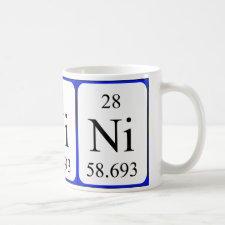
Authors: Laatikainen K, Branger C, Coulomb B, Lenoble V, Sainio T
Article Title: In situ complexation versus complex isolation in synthesis of ion imprinted polymers.
Publication date: 2018
Journal: Reactive and Functional Polymers
Volume: 122
Page numbers: 1-8.
DOI: 10.1016/j.reactfunctpolym.2017.10.022
Alternative URL: https://www.researchgate.net/publication/320759943_In_situ_complexation_versus_complex_isolation_in_synthesis_of_ion_imprinted_polymers
Abstract: In this study, the object is to prove that isolation of complexes made by varying the metal/ligand ratio (in situ complexation) yields similar polymer characteristics, metal binding and selectivity results as polymers synthesized by isolating the complex by precipitation. Complexation between nickel and the N-(4-vinylbenzyl)-2-(aminomethyl)pyridine (Vbamp) monomer was studied in dimethyl sulfoxide (DMSO) and in a DMSO-methanol mixture (50:50, v/v) at 80 -ŚC using a Ni(NO3)2 6H2O salt as the nickel source. According to the results, the three nickel/Vbamp complexes could be selectively obtained using specific conditions: for [Ni(Vbamp)]2 + the Ni/Vbamp ratio in DMSO was 1.08, for [Ni(Vbamp)2]2 + the Ni/Vbamp ratio DMSO-methanol (50:50, v/v) was 0.49 and for [Ni(Vbamp)3]2 + the Ni/Vbamp ratio in DMSO was 0.3. Ion-imprinted polymers (IIPs) were prepared either with [Ni(Vbamp)](NO3)2, [Ni(Vbamp)2](NO3)2, or [Ni(Vbamp)3](NO3)2 complexes as the template. IIP with a [Ni(Vbamp)3]2 + complex, isolated by precipitation prior to polymerization, was also prepared. The results demonstrated that surface properties, nickel binding and selectivity properties were similar for both kind of IIPs - prepared by in situ complexation or isolation of the complex prior to polymer synthesis. Selectivity coefficients of nickel toward zinc for IIPs with [Ni(Vbamp)]2 +, [Ni(Vbamp)2]2 + and [Ni(Vbamp)3]2 + templates were close to 1038, 1441 and 1463, respectively
Template and target information: nickel ion, Ni(II)
Author keywords: N-(4-vinylbenzyl)-2-(aminomethyl)pyridine (Vbamp), nickel, Distribution of complexes, Isolation of complexes, Ion imprinted polymers (IIP)



Join the Society for Molecular Imprinting

New items RSS feed
Sign-up for e-mail updates:
Choose between receiving an occasional newsletter or more frequent e-mail alerts.
Click here to go to the sign-up page.
Is your name elemental or peptidic? Enter your name and find out by clicking either of the buttons below!
Other products you may like:
 MIPdatabase
MIPdatabase









